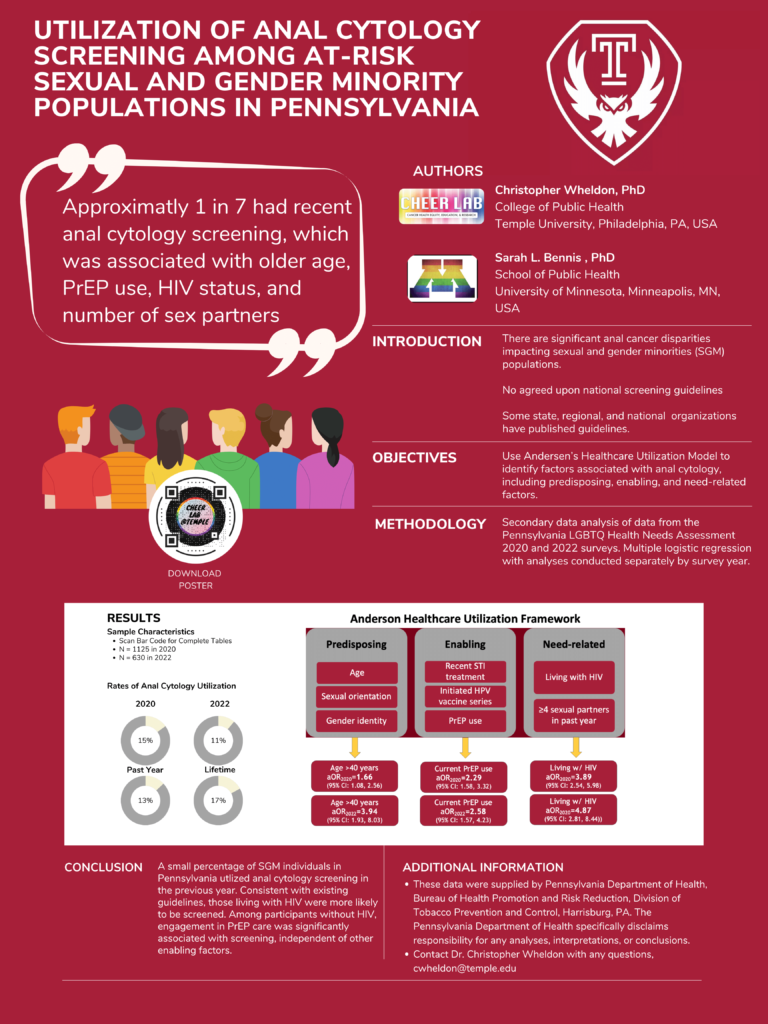UTILIZATION OF ANAL CYTOLOGY SCREENING AMONG AT-RISK SEXUAL AND GENDER MINORITY POPULATIONS IN PENNSYLVANIA
The following poster/abstract reports on data presented at the 2023 International Anal Neoplasia Society.

Background: Anal cancer disproportionately affects gay, bisexual, and other men who have sex with men (GBM), as well as transgender women (TGW). Current recommendations suggest anal cancer screening, specifically anal cytology, for high-risk populations, particularly GBM/TGW living with HIV. This study aims to utilize the Andersen Healthcare Utilization Model to identify factors associated with anal cancer screening among GBM/TGW, including predisposing, enabling, and need-related factors.
Methods: Two cross-sectional surveys from the Pennsylvania LGBTQ Health Needs Assessment conducted in 2020 (N=905) and 2022 (N=440) were analyzed. Multiple logistic regression analyses were performed to determine the correlates of screening uptake.
Results: The average age of respondents was 39.5 (SD=13.6) in 2020 and 43.1 (SD=14.0) in 2021. A minority of respondents reported undergoing screening in the past year (14.9% in 2020 and 13.2% in 2022). Predisposing correlates of screening included Hispanic ethnicity (aOR2020=2.18; 95% CI:1.07-4.46), Black race (aOR2022=4.28; 95% CI:1.60-11.45), and public insurance (aOR2022=2.58; 95% CI:1.36-4.90). Enabling correlates included receiving treatment for a sexually transmitted infection in the past year (aOR2020=1.69; 95% CI:1.14-2.51), current use of HIV pre-exposure prophylaxis (PrEP) (aOR2020=2.38; 95% CI:1.60-3.52 & aOR2022=2.41; 95% CI:1.32-4.37), and HPV vaccination (aOR2022=1.84; 95% CI:1.02-3.31). A previous HIV diagnosis was the only need-based correlate (aOR2020=2.18; 95% CI:1.44-3.30 & aOR2022=4.40; 95% CI:2.45-7.90).
Conclusions: A small percentage of GBM/TGW in Pennsylvania participated in anal cytology screening in the past year. Consistent with existing guidelines, GBM/TGW living with HIV were more likely to be screened. Among GBM/TGW without HIV, engagement in PrEP care was significantly associated with screening, independent of other enabling factors.